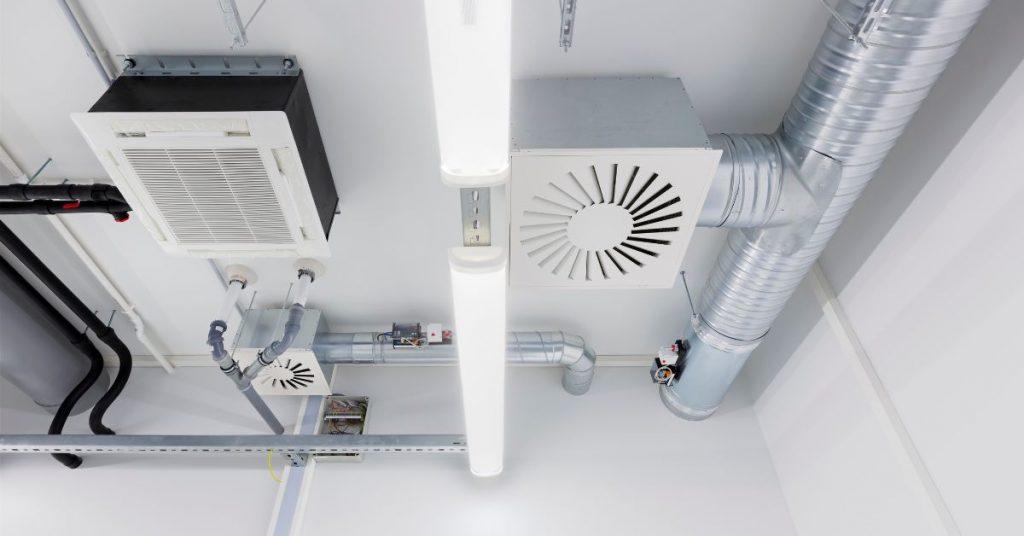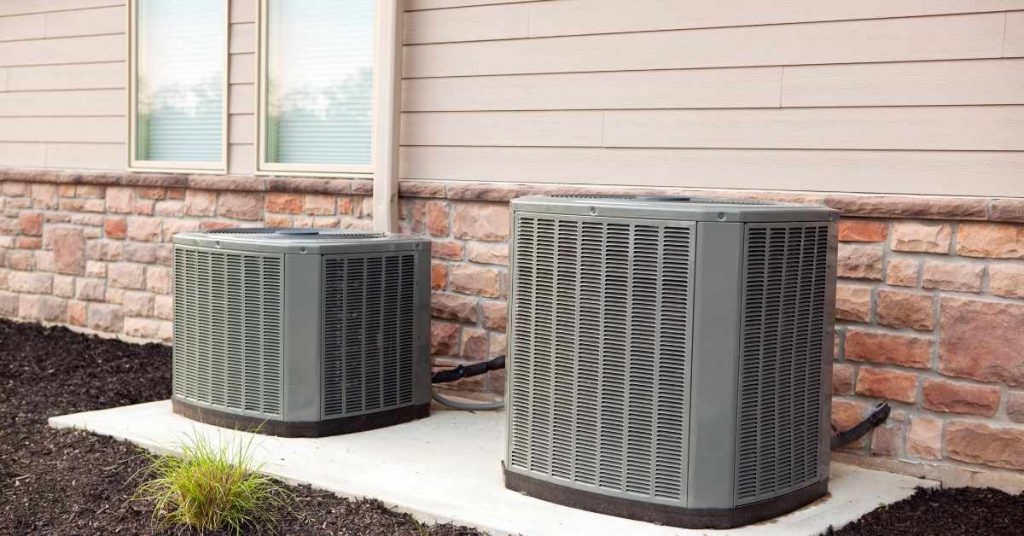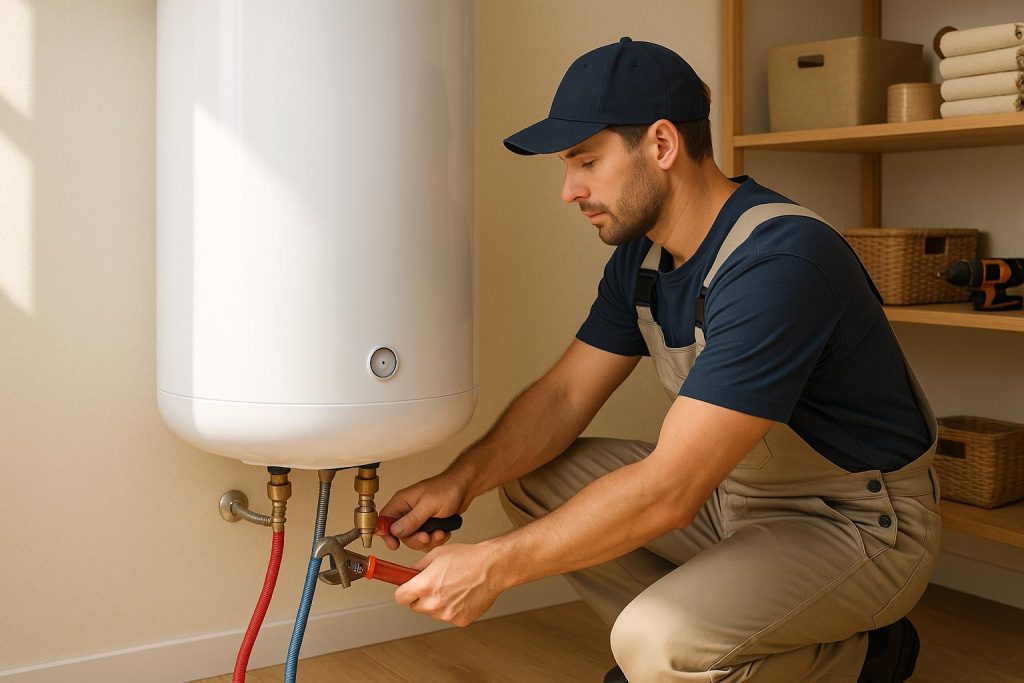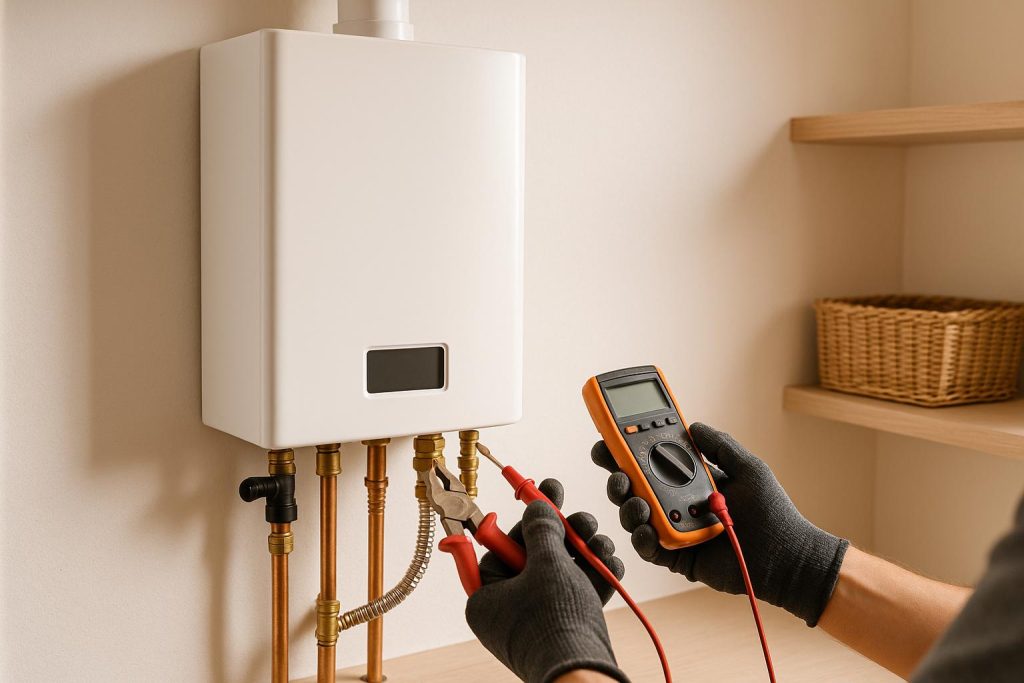
Dual zone HVAC systems, also known as multi-zone or zoned HVAC systems, provide greater control over indoor climate by dividing a building into multiple zones, each with its thermostat and dampers for individual temperature regulation. Here’s a summary of how dual zone HVAC systems work, along with their pros and cons:
How Dual Zone HVAC Systems Work:
- Zone Division: A dual zone HVAC system divides a building into separate zones based on heating and cooling needs. Zones can be individual rooms, floors, or specific areas.
- Thermostats: Each zone has its thermostat, allowing occupants to set their preferred temperature independently. These thermostats communicate with the HVAC system to control heating and cooling.
- Dampers: Zone dampers are installed within the ductwork leading to each zone. They open or close based on the thermostat’s signals, regulating the airflow to that particular zone.
- System Control: The HVAC system’s control panel manages the entire system, coordinating the operation of multiple thermostats and dampers to maintain desired temperatures in each zone.
- Sensors: Temperature sensors in each zone continuously monitor temperature variations and communicate with the control panel to adjust the dampers and HVAC operation accordingly.
Pros of Dual Zone HVAC Systems
- Energy Efficiency: Dual zone systems enable targeted heating and cooling, reducing energy consumption by only conditioning occupied areas.
- Customized Comfort: Occupants can set their preferred temperatures, ensuring individualized comfort throughout the building.
- Zoned Control: Flexibility in zone configuration allows for zoning by usage patterns, optimizing comfort and efficiency.
- Cost Savings: By minimizing the need to condition unoccupied areas, dual zone systems can lead to lower energy bills.
- Improved Air Quality: Zoning can enhance indoor air quality by preventing the spread of contaminants from one zone to another.
Cons of Dual Zone HVAC Systems
- Initial Cost: Dual zone systems typically have a higher upfront installation cost due to the added equipment and complexity.
- Maintenance: Maintaining multiple thermostats, dampers, and sensors may require more frequent inspections and maintenance.
- Installation Complexity: Retrofitting a dual zone system into an existing HVAC setup can be challenging and costly.
- Compatibility: Not all HVAC systems can easily accommodate zoning, so compatibility must be considered during installation or upgrades.
- Potential Balancing Issues: Improperly balanced dampers can result in uneven temperature distribution and comfort issues.
How Does a Dual Zone HVAC System Work?

In traditional central air conditioning system, the heating and cooling needs of the entire house are controlled by one thermostat centrally located inside the house. That is like controlling the lighting needs of your house using only one switch and one bulb.
As you can expect, it gets darker the farther away you move from the bulb. It is the same thing with central air conditioning. Even though there is a ductwork network in every room, you will notice that the father a room is away from the air handler the harder it is to air condition it.
That is the reason you will find that the upper rooms of your house will be warm while the lower floors are sufficiently cooled. That situation is less than ideal.
Dual zone HVAC systems are designed to take care of that problem. Apart from that, they also allow you to have inbuilt zoning so that different areas of your house will be heated and cooled differently.
Although it sounds complicated, dual zone HVAC systems are easy to understand and implement. A dual zone HVAC system has 3 main components
- Motorized dampers
- Thermostat for each intended zone
- Control panel
In essence, a damper is a device that automatically opens and closes to allow the flow of air/heat from the air handler to a specific zone through the ductwork. The dampers are installed either inside the air ducts or at the air outlet.
The number of dampers and thermostats is determined by the number of zones needed in the house. Usually, the number of zones in a house depends on the size of the house, number of floors and rooms as well as rooms’ layouts.
A thermostat is basically an electronic device that sends a signal to the HVAC system to start heating or cooling the room immediately the temperature of the room corresponds to that set in the thermostat.
Each zone has its own thermostat and motorized damper. The different thermostats and dampers are then connected to a control panel which is in turn connected to the entire HVAC system. Signals from the thermostat are sent to the control panel which then sends commands to the motorized dampers to open or close.
The control panel allows the heat and cooling needs of all the zones to be addressed from a single point.
Because there are multiple thermostats in the different zones, you can set each thermostat to a temperature setting different from the others as you or the other members of the family may prefer.
If for instance you have set the temperature in your home office (upper floors) different from say the baby’s bedroom, once the temperature in the office corresponds to that set in the thermostat, all the other dampers will shut off while the one to your office will remain open.
All the air from the air handler will be allowed to flow to your office until it is sufficiently cooled. When another zone calls for air conditioning, again its damper will remain open while all the others close.
After all the zones in your house have been properly air conditioned, the entire HVAC system will turn off.
Advantages of Dual Zone HVAC System
Dual zones HVAC systems have their benefits and setbacks just like any system. The following are the advantages of a dual zone HVAC system compared to the traditional central air cooling/heating or even a dual unit system:
1. Higher Efficiency
Dual zone HVAC systems allow you to direct heat or cooled air where it is needed and then the system turns off. Without it, you would need to overwork the system to cool or heat the upper floors as well as the farthest rooms while unoccupied rooms like basements remain air-conditioned.
In an HVAC system, the more efficient as system the less you are going to pay in terms of electricity bills.
2. Customized Zoning
A dual HVAC system in a way brings about the same inbuilt zoning as in ductless mini-splits air conditioners when compared to the traditional central air conditioning.
With this system, you are able to control the zone of each room such that you can have your home office nicely cooled in the afternoon while your baby (napping in a different room) remains warm.
3. Less Wear on the HVAC System
Blasting your air conditioner to achieve proper cooling or heating in all the areas of the house will without a doubt put a strain on its components (like the compressor) which will increase wear and tear.
Wear and tear mean frequent repairs or even reduced lifespan of the system. Dual zone HVAC systems do not work that hard hence they do not strain the system and can hence last long.
Disadvantages of Dual Zone HVAC Systems
One of the main disadvantage of dual zone HVAC systems is that a zone cannot be too small. For proper zoning, each zone needs to be a certain size otherwise there will be “communication” between 2 or more zones.
The problem with small/tine zones is that the system will not be able to cycle the air properly. Each room in your house will not necessarily become a different zone. Actually it is not uncommon for a single zone to comprise of several rooms in the house.
Another thing to remember is that to have a dual zone HVAC system in your house you will need a two-stage air conditioner (high and low) with a variable-speed blow on the furnace/air handler and not a single-stage air conditioner (offering only high).
Although initially expensive, these air conditioners are cheaper to run because of their high efficiency.
You Need a Dual Zone HVAC System If:
Dual Zone HVAC systems are not for everyone. The following are the main reasons why you may need a dual zone air conditioning system:
- Your house has multiple stories
- The house does not have an open floor concept
- You have a basement
- There are rooms with expansive windows
- Some rooms are rarely used
- You have a vaulted ceilings or a loft
- A family member (or yourself) have very specific temperature requirements that are different from those of others.
Dual Zone vs Dual-Unit HVAC Systems

There is a good number of homeowners who confuse between a dual-zone and a dual-unit HVAC system. So, how different are they?
A dual zone HVAC system has one condenser unit and a single furnace/air handle but with several thermostats and dampers. On the other hand, dual unit systems have 2 condenser units and 2 furnaces/air handlers, each with a different thermostat.
Needless to say, installing and running a dual-unit HVAC system is way too expensive compared to a dual zone HVAC system. Sometimes you may however need to install a dual-unit system instead of a dual zone system.
If for instance your house will also include rental units where the tenant may want control over their thermostat, installing a dual/multi-unit HVAC system makes sense. For person residential applications I would however advise that you go with a dual zone system.
Alternatives to Dual HVAC Systems

So, is there an alternative to dual HVAC system? To start with, if the only problem you are dealing with is a hot spot in one of the rooms, you can opt to just install a portable air conditioner in that room.
That should take care of the problem. Another type of air conditioner you can install is a window air conditioner. Check out the pros and cons of portable and window ACs in this post.
If you would like to have inbuilt zoning in your house, the alternative would be ductless mini-splits ACs. This would especially be a good idea in a new house that does not have ductwork already installed.
In a ductless air conditioner, you have one big condenser unit outside the house and several indoor units (evaporators) one in each room, usually mounted on the wall, floor or even ceiling.
Related: Central air vs ductless mini-splits
Each indoor unit can be set to its own temperature which can also be adjusted using a wireless remote control.
Wrap Up
Dual zone HVAC systems will be a good idea for you if you want to reduce your electricity bills from heating and cooling, if you want to have inbuilt zoning as well as if you want to deal with hot spots in the house. You will however need to talk to an HVAC technician to find out if they will be good fit for your house.





